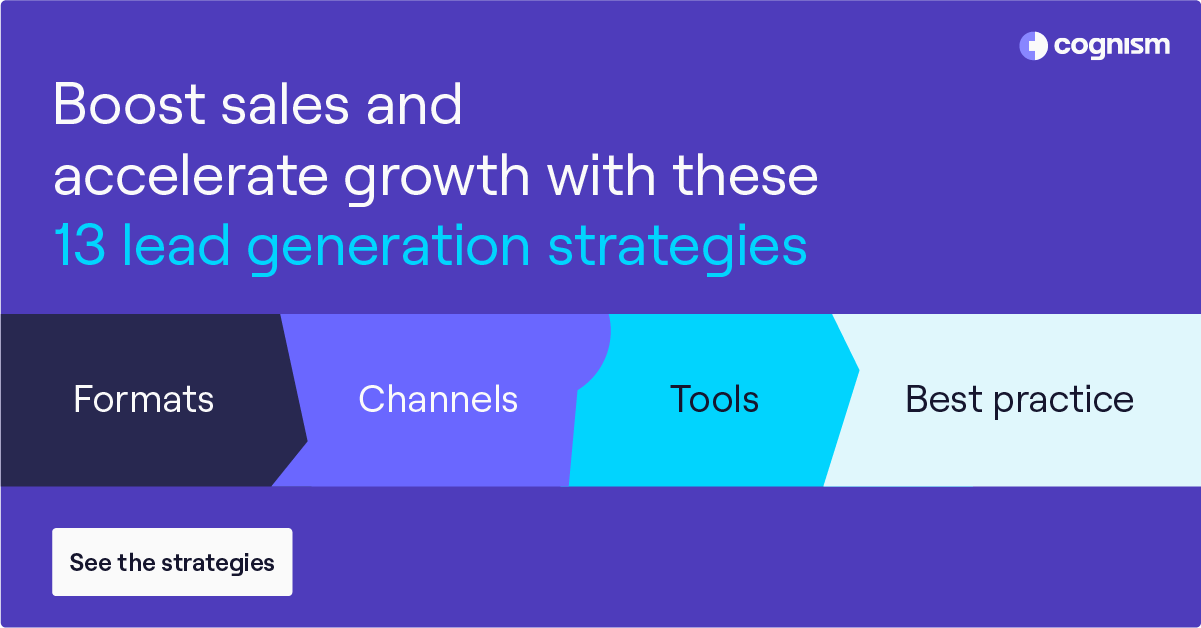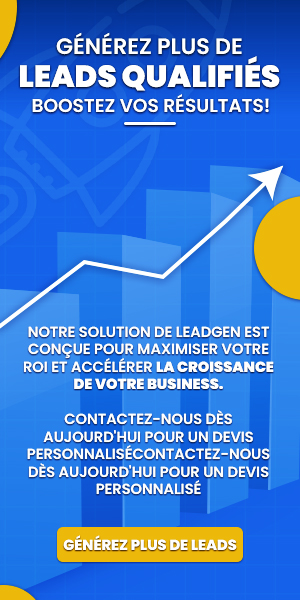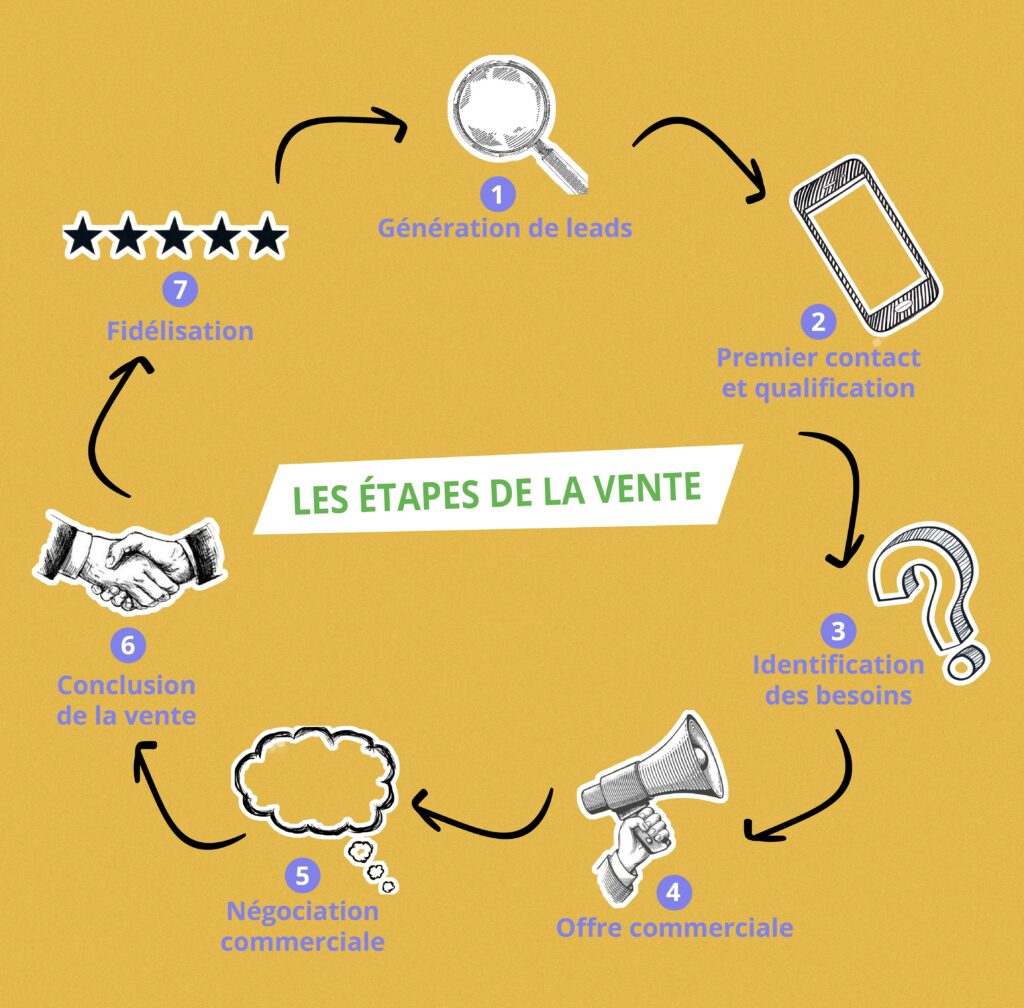In a world where ideas abound, the real challenge lies in transforming them into effective generation strategies. Companies not only want to generate interest, but also convert this curiosity into tangible opportunities. To succeed in this metamorphosis, it is crucial to adopt a structured approach, combining creativity and rigorous analysis. This approach involves clearly identifying your objectives, understanding your target audience and using the tools and techniques available. Through this exploration, we will discover how to structure your thoughts to maximize impact and ensure sustained growth.
Table des matières
ToggleUnderstanding the creative process

THE creative process is a crucial step in transforming ideas into generation strategies effective. Understanding this process allows you to better guide your actions and obtain concrete results.
This process generally involves several key phases:
- Inspiration : Collect ideas from various sources, such as market research, current trends or even customer feedback.
- Ideation : Generate a wide range of ideas from the information collected. Brainstorming and collaborative methods can be very useful.
- Assessment : Analyze collected ideas to determine their feasibility and relevance to business objectives.
- Prototyping : Develop a first version of the strategies, ensuring that each idea is correctly implemented.
- Test and adjustment : Practice strategies on a small scale, then collect data to identify areas for improvement.
Clarity is essential at every step of this process. Each of these phases must be carefully documented to allow continuous assessment and an improvement in the strategies implemented.
There collaboration also plays a key role in the creative process. Involving different stakeholders can enhance originality and provide a fresh perspective on proposed ideas.
Finally, good monitoring of performance Generation strategies allow actions to be adjusted along the way, thus ensuring increased efficiency in the long term.
Identify your key ideas
Transforming ideas into effective generation strategies requires a thorough understanding of creative process. It starts with the idea generation, where it is crucial to identify concepts that have the potential to transform into concrete strategies.
It is essential to focus on identifying your key ideas. This involves analyzing your knowledge, experiences and the needs of your target market.
- Brainstorming: Hold brainstorming sessions with your team to explore different perspectives.
- Trend Analysis: Study current trends in your industry to identify relevant ideas.
- Active listening: Take into account feedback from your customers and prospects to adjust your ideas.
Once the key ideas have been identified, it is important to categorize them according to their potential for impact. Create groups of ideas that meet specific goals, such as:
- Increased brand awareness
- Acquisition of new customers
- Loyalty of existing customers
Then, evaluate each idea using criteria such as feasibility, cost, and time required for implementation. This evaluation matrix will help direct your choices towards the most viable ideas.
Once ideas are refined, taking action is crucial. Developing a detailed strategic plan will clarify the steps to follow and the resources needed. Don’t forget to integrate a tracking system to measure the impact of each initiative.
Finally, the creative process never stops. Stay open to market developments and your audience’s reaction in order to continually adjust your strategies.
Evaluate the potential of each idea
The creative process is at the heart of any effective generation strategy. To maximize the impact of your ideas, it is essential to understand the different stages that make up this process.
Each idea deserves special attention. Evaluate the potential of each idea can make the difference between a project that works and one that stagnates. Here are some criteria to consider during this evaluation:
- Alignment with business objectives : Make sure the idea supports the company’s overall goals.
- Target audience : Identify whether the idea meets the needs of a segment of your audience.
- Roadmap : Check if the idea can be implemented with the available resources and talents.
- Return on investment : Weigh potential outcomes against associated costs.
Then, a good brainstorm can help enrich your ideas. Invite different stakeholders to participate. This can promote a better understanding of market trends and expectations, as well as spark innovative ideas that can prove to be real springboards for your strategy.
Once you have evaluated and selected the most promising ideas, the next step is to formalize them into concrete strategies. Create detailed action plans outlining the steps needed to implement each idea. Be sure to include key performance indicators (KPIs) to measure the success of each initiative.
Finally, theanalysis of results is essential. Use analytics tools to track results against set goals. This will allow you to adjust your strategies in real time and further optimize your generation efforts.
Embracing this process of transforming ideas into solid operational strategies is the key to achieving sustainable, measurable results in your business.
Implement generation strategies
Transforming ideas into effective generation strategies relies on a thorough understanding of marketing objectives. It is essential to clearly define what you want to achieve. Whether it is the increase in qualified leads or the improvement of conversion rate, each objective requires a specific approach.
Once the clear goals, the implementation of appropriate strategies becomes crucial. Here are some steps to follow:
- Analyze the target market : identify who your prospects are and understand their needs.
- Develop a communications plan: establish appropriate communications channels, including social networks, the company blog and newsletters.
- Establish a system ofautomation : use tools that track prospect interactions and personalize the experience.
- Create engaging content: produce content that answers your prospects’ questions and encourages them to take action.
- Measure performance: use analytics tools to evaluate the performance of your campaigns and adjust strategies accordingly.
THE generation strategies must also include initiatives to lead nurturing. This means staying in touch with prospects throughout their buying journey, providing them with relevant and useful information.
Consider developing strategies for loyalty to transform these leads into lasting customers. Customer satisfaction and engagement are key elements for a long-term growth.
Innovation is essential in creating your generation strategies. Follow market trends and integrate innovative solutions that could make a difference in your approach.
In summary, turning your ideas into effective generation strategies requires careful planning, intelligent automation, and continuous performance evaluation. By implementing these elements, you will be able to maximize your results and successfully achieve your marketing goals.
Develop an action plan
The implementation of generation strategies effective involves several key steps that help transform ideas into concrete actions. A good plan starts with a thorough understanding of your target market and their needs.
Analyze current market trends and identify specific problems that your audience faces is essential. This allows you to create a relevant and engaging message that resonates with your prospects.
Once you have a clear idea of your audience and their needs, it is crucial to develop an action plan. This plan must include specific and measurable objectives, such as:
- Increase the number of qualified leads.
- Improve conversion rates.
- Optimize nurturing strategies.
- Evaluate the performance of current campaigns.
Then choose the communication channels the most appropriate to reach your prospects. Social media, blogs, and newsletters are great options for spreading your message.
It is also advisable to integrate tools forautomation in your strategy. These make it easier to manage interactions with prospects and track their purchasing journey:
- Set up automatic responses for new leads.
- Use personalized email sequences for nurturing.
- Analyze collected data to adjust tactics in real time.
Remember to regularly evaluate the results of your actions. Data analysis allows you to judge the effectiveness of your methods and make improvements based on concrete results, thus ensuring the continuity of your innovation and your efficiency.
Measure and adjust your strategies
Transform ideas into effective generation strategies requires a thoughtful and methodical approach. Companies must first identify their objectives and evaluate their resources. This lays the foundations for a realistic and measurable action plan. The entire process should be focused on engaging the target audience and optimizing conversions.
Once the objectives have been defined, it is essential to implement generation strategies clear and adaptable. Here are some methods to consider:
- Creation of relevant content : Develop content that directly addresses the needs and questions of your audience.
- Email campaigns : Use targeted emails to nurture prospects throughout their journey.
- Online advertising : Invest in advertising campaigns on suitable platforms to maximize visibility.
- Social media engagement : Interact with your community to strengthen relationships and generate leads.
To ensure the effectiveness of these strategies, it is crucial to measure and adjust your strategies. This involves using analytics tools to track performance and understand the behavior of your prospects. Here are some key indicators to watch:
- Email open rate
- Link click-through rate
- Advertising campaign conversion rate
- Social media engagement
By analyzing this data, businesses can determine what is working and what needs adjustment. Additionally, it is important to stay on top of innovations and market trends to adapt strategies accordingly. Flexibility and agility are the keys to maintaining the effectiveness of generation actions.













